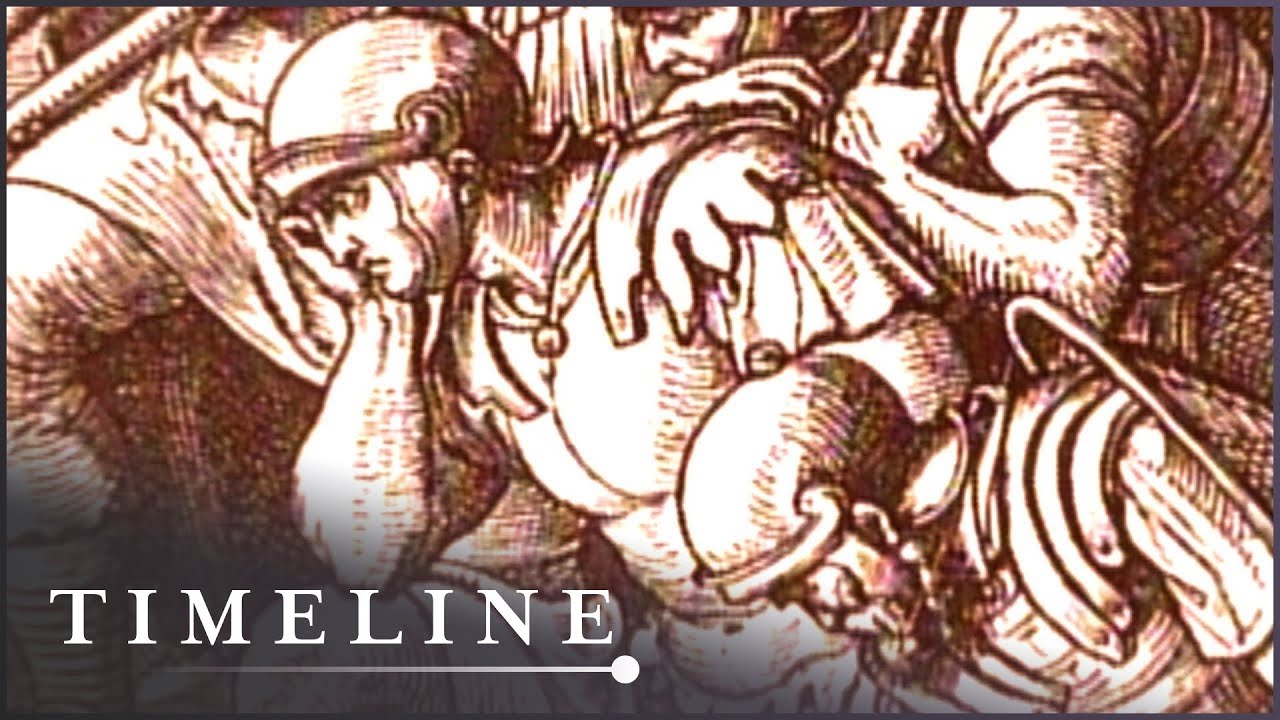For nearly 2,000 years, the details surrounding one of the bloodiest battles of antiquity have been shrouded in doubt and mystery. But ongoing excavations in Germany’s Teutoburg Forest are finally revealing the truth about the ambush that led to the downfall of an arrogant Roman general and three of Rome’s crack legions in 9 AD.
Publius Varus, the Roman general in question, had underestimated the strength of several rebellious Germanic tribes, and he believed he could easily suppress them before marching his troops to their winter campsite. But he was wrong, and he walked straight into an elaborate and well-organized ambush.
For years, the exact location of the battle was a subject of speculation and debate among historians and archaeologists. But in recent years, excavations in the Teutoburg Forest have uncovered a wealth of artifacts and evidence that have shed new light on the events that transpired on that fateful day.
Among the most significant finds are a collection of Roman coins and pottery shards, as well as evidence of a large encampment that was used by Varus and his troops. In addition, the discovery of human remains, including bones with clear signs of violent trauma, have provided further confirmation that a major battle took place in the area.
The evidence has also revealed new details about the battle itself. It appears that Varus and his legions were ambushed by a force of several thousand Germanic warriors, who used the rugged terrain of the forest to their advantage. The Roman soldiers were caught off guard and ill-prepared for the ferocity of the attack, and they were quickly overwhelmed.
The battle was a turning point in Roman history, marking the end of Rome’s attempts to expand into Germania and solidifying the borders of the Roman Empire. But it also served as a cautionary tale about the dangers of underestimating one’s enemies and the importance of respecting the power of local resistance movements.
The battle in the Teutoburg Forest has long been shrouded in mystery and legend. According to ancient accounts, the Roman general Publius Varus led three legions into the Germanic forest, where they were ambushed and annihilated by a coalition of Germanic tribes led by Arminius, a Roman-educated chieftain who had switched sides.
The story goes that the Romans were trapped in the dense forest, unable to maneuver and heavily outnumbered. The Germanic warriors attacked from all sides, using guerrilla tactics and exploiting the terrain to their advantage. The Roman army suffered a devastating defeat, with estimates of the number of casualties ranging from 10,000 to 20,000 soldiers.
For centuries, historians and archaeologists struggled to locate the precise site of the battle. Some believed that it had taken place near the modern city of Osnabrück, while others searched in vain for evidence in other parts of the forest.
However, in the early 20th century, a German historian named Theodor Mommsen suggested a new location for the battle, based on his interpretation of ancient texts and his knowledge of the topography of the region. Mommsen believed that the Romans had been ambushed in a narrow, mountainous pass known as the Kalkriese Hill.
Despite Mommsen’s theory, it wasn’t until the 1980s that serious excavations began at Kalkriese. The first major breakthrough came in 1987, when archaeologists uncovered a large number of Roman military artifacts, including swords, helmets, and armor.
Since then, excavations at Kalkriese have continued to yield new and surprising discoveries. In addition to Roman artifacts, archaeologists have uncovered evidence of a sophisticated Germanic military encampment, complete with watchtowers, fortifications, and weapons storage.
The discoveries at Kalkriese have challenged many of the assumptions and legends surrounding the battle. Rather than a chaotic melee in the dense forest, it now appears that the Germans had carefully planned and prepared for the ambush, using their knowledge of the terrain and the Romans’ tactics to their advantage.
Moreover, the evidence suggests that the Romans were not caught completely off guard. They had apparently attempted to fortify their campsite and make a stand against the Germanic attackers. However, they were ultimately overwhelmed by the sheer number and ferocity of their opponents.
Overall, the ongoing excavations at Kalkriese are shedding new light on one of the most significant military disasters of the ancient world. They are also a testament to the power of modern archaeology to challenge and revise our understanding of the past.
Today, the site of the battle is a popular destination for tourists and history buffs, who come to pay their respects to the soldiers who fought and died there. And as new excavations continue to uncover more evidence about the battle, it is likely that the story of Varus and his ill-fated campaign will continue to capture the imagination of people around the world.
The ongoing excavations in the Teutoburg Forest continue to shed new light on the events that took place there almost 2,000 years ago. With each new discovery, archaeologists are able to piece together a more complete picture of the battle and its aftermath.
The site serves as a reminder of the dangers of overconfidence and underestimating one’s opponent, as well as the importance of proper reconnaissance and preparation in military campaigns. The legacy of the Battle of Teutoburg Forest lives on, not only in the archaeological record, but also in the lessons it offers to military strategists and historians alike.


